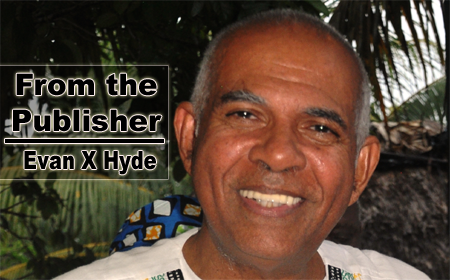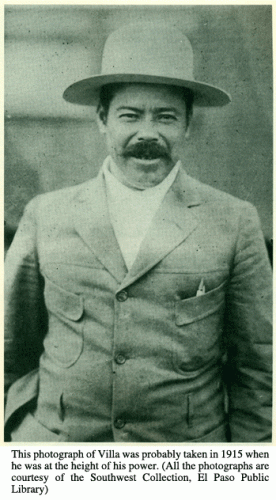Casual students of the Mexican Revolution, which may have lasted from 1910 to 1940, will readily recall the names of Emiliano Zapata and Pancho Villa, but it is only serious students of that revolution who are aware of the important revolutionary presidencies in Mexico of Calles in the 1920s and Cardenas in the 1930s.
It may be that many of the socio-political gains of the Mexican Revolution have now been reversed. There were some Mexican presidencies in the latter part of the twentieth century, such as that of Carlos Salinas de Gortari, which were practically neoliberal. The fact remains, nevertheless, that during the course of the revolution, after the early popular uprisings led by Villa in the North and Zapata in the South, the Mexican Revolution was influenced by the historic success of the Russian Revolution in 1917. The Mexican Revolution elevated the power of the workers and peasants, and significantly reduced the traditional post-Conquest power of the Roman Catholic Church.
During the course of the Mexican Revolution, Guatemala, to the immediate south of Mexico, was being led by oligarchical presidents and military dictatorships, supported by the established Church. From 1944 to 1954, however, there was a revolution of sorts in Guatemala, featuring the democratic presidencies of Arevalo and Arbenz, a revolution which was halted by a CIA-sponsored military coup in 1954, whereupon Guatemala returned to the era of military dictatorships, until the democratic election of Vinicio Cerezo to the presidency in 1985. (Cerezo actually began serving as President in January of 1986. There were three assassination attempts on his life.)
In 1959, Cuba, which is to the east of Mexico and to the south of the United States in the Caribbean, experienced a revolution which overthrew the military dictatorship of Fulgencio Batista. The Cuban Revolution was not a communist revolution as such: it was a fight against oppressive, corrupt military rule. But not long after coming to power in January of 1959, Fidel Castro declared himself a Marxist-Leninist.
When a national or regional power structure describes you as a “communist,” what this means to the superstitious masses of the people in poor countries like Belize, is that you do not believe in God. The presumed father of communism, Karl Marx, had described religion as the opium of the masses. The reason communism had become so powerful in Europe and Eastern Europe in the latter part of the nineteenth century and early in the twentieth, was not because it was an atheistic philosophy, but because it appealed to the hungry, exploited masses of workers and peasants in Europe and Eastern Europe. That appeal was so great that Pope Leo XIII felt compelled to produce a papal encyclical in 1891 entitled De Rerum Novarum, which supported a non-atheistic version of communism, which was referred to as socialism.
There have been several European governments, through the twentieth century and into the twenty-first, which were considered socialist. What this means is that the power of the investment capitalists and bankers is controlled, and the rights of workers and peasant farmers are protected. There is an attempt to balance the age-old competition/conflict between capital and labor. In a socialist system, trade unions hold pride of place.
The United States, while it considered itself an anti-colonial state after declaring its independence from the United Kingdom in 1776, was always a place where rugged individualism was celebrated, and where a muscular form of capitalism was espoused. In pursuing the philosophy of expansionist capitalism, the United States became the most powerful nation in the world after World War II ended in 1945. As early as 1823, however, after Mexico and the Central American states (including Guatemala) became independent of Spain in 1821, the United States had declared, by means of the Monroe Doctrine, its resolve to rule the Western Hemisphere without interference from Europe and the rest of the world.
During the course of the nineteenth century, there were many military skirmishes, even wars, between the United States and Mexico, nations which are only separated by a long but narrow river known as the Rio Grande. The black Mexican President, Vicente Guerrero, had abolished slavery in 1829, whereas the United States was so committed to chattel slavery that the Americans fought a bloody civil war between 1861 and 1865 to decide the issue.
During the neoliberal dictatorship of Porfirio Diaz in Mexico in the last part of the nineteenth century and the early part of the twentieth, the dictatorship which provoked the rebellion in 1910 which became the Mexican Revolution, the United States and Mexico had been friends, but the populism of the Mexican Revolution, which became communist-like after the 1917 Russian Revolution, was very unsettling to the hard line capitalists who controlled American politics.
Guatemala had remained a stronghold of the type of capitalist oligarchy the Americans preferred in Latin America throughout the course of the Mexican Revolution. It is reasonable to speculate that it was during the course of the Mexican Revolution that Guatemala became the absolute Washington favorite that republic has remained to this day.
The Guatemalan rulers, in turn, were so faithful to the United States that they allowed Guatemala to be used as a training base for CIA-sponsored Cuban exiles to invade Castro’s communist Cuba. This act of subservience to Washington and enmity to a fellow Latin state, sparked a rebellion in the ranks of the Guatemalan military in late 1960. Many scholars consider that army uprising to be the beginning of a civil war in Guatemala which did not end until 1996.
British Honduras officially became a British colony in 1862 after being a so-called “Settlement of Belize” from the seventeenth century. Belize/British Honduras practiced slavery and individualistic capitalism until the African slaves were freed in 1838. Once British Honduras became a self-governing colony in 1964, and poised to become an independent Central American state, Belize became an important subject in the foreign policy discussions of the American State Department, which was focused on preventing the Cuban Revolution from spreading into Guatemala and the rest of Central America.
The fact that communist Cuba was the leading regional sponsor of Belize’s independence and territorial integrity remains a matter of major concern in the State Department. It is critical for us Belizeans to understand the geopolitics of Belize’s situation. Guatemala is to our immediate south and west; Mexico is to our immediate north; and Cuba is not far away from us in the east. It may be time, even past time, for us Belizeans to become as serious as the Mexicans, the Guatemalans, and the Cubans are. The world is real.
Power to the people.



